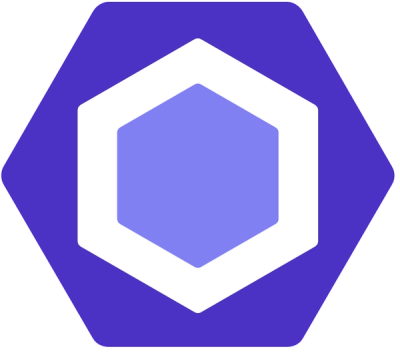
Security News
Follow-up and Clarification on Recent Malicious Ruby Gems Campaign
A clarification on our recent research investigating 60 malicious Ruby gems.
Noe is a tool that generates project skeletons from predefined templates. A template is designed for a specific product (a ruby library, a static or dynamic web site, ...). Noe instantiates templates and helps you maintaining your product via meta-information provided by a .noespec yaml file. In contrast to other tools, Noe is not specific to certain kinds of products. Writing your own template is possible and even simple!
Noe comes bundled with a skeleton for creating and maintaining a ruby gem. This skeleton is written and maintained to follow ruby best practices and may also be tuned for your own needs. Read more about it and related projects as well as the underlying philosophy in the sections below.
[sudo] gem install noe
[noe --help]
[noe help install]
noe install
Have a loot at ~/.noerc and ~/.noe for configuration and a default ruby template. To instantiate a ruby project simply execute the following commands in turn:
# Given a template ruby under ~/.noe/ruby, install by default
noe prepare --template=ruby foo
cd foo
# Edit the template configuration foo/foo.noespec
edit foo/foo.noespec
# Launch template instantiation
noe go
That's it! But also have a look at 'noe help prepare' and 'not help go' for additional options. Also have a look at http://revision-zero.org/noe for a blog post about basic usage.
Noe is designed to follow a certain number of good principles and helps you following them as well.
Noe maintains a strong separation of concerns. In particular one has to make the distinction between a) Noe itself, b) a skeleton and c) an instantiated product. This fact has two main consequences:
Noe itself is not dedicated to specific products (like a ruby library). Even if Noe comes bundled with a default skeleton for ruby projects, writing skeletons for something else should not be a problem. In other words, Noe itself is agnostic: the semantics of generated products is the secret of the skeleton, under the responsibility of it's maintainer.
Noe should not be a runtime dependency of the product. Good skeletons maintain this separation. As an example the default ruby skeleton is strictly independent of Noe itself. Principles discussed below explain why this is important.
The separation of concerns described previously also drives what you have to learn and what tools you have to master:
As an ordinary Noe user (vs. skeleton maintainer) and because Noe itself (unlike skeletons is project agnostic, you only have to know basic Noe commands (see 'noe --help') and should never have to study Noe's API and internals. In contrast, you have to master the tools and best practices of your product's ecosystem. A good skeleton should help you along this task. As an example, the default ruby skeleton is fully documented to help you gaining understanding of rake, spec, yard, bundler and so on but not noe itself.
This explains why Noe itself is not a runtime dependency. Using a particular skeleton already means learning a lot, at least in the long run (see the section about Magic below). Noe avoids interfering with generated products to avoid making the learning curve even worse.
Being a skeleton creator/maintainer is another story of course. To write a skeleton you'll also have to learn Noe's API and internals. To write a good/reusable one, you'll certainly have to master the full ecosystem and best practices of the targetted product, which is a good opportunity for learning and sharing it!
"Don't Repeat Yourself" and "Convention over Configuration" are certainly good principles. However tuning, configuration and options exist, are useful and should certainly not be hidden to the user. Instead configuration and options should come with default values, and should be fully documented. Providing magic is great if there is a user-centric way (in contrast to a developer one) of understanding and controlling the magic and underlying assumptions.
As an example, the default ruby template comes with some magic: you can create a project and immediately invoke 'rake test', 'rake yard', ... and not investigating further. You can also have a look at the tasks folder to understand and control the rake tasks that your project will use... In fact, you must investigate: the generated product is yours, not mine and YOU have to master your build chain!
Noe is inspired by existing projects, mostly from the ruby community. In particular, the default ruby template has been heavily influenced by the projects below as well as feedback of their authors:
These projects help you generating and maintaining ruby projects (generally gem libraries, in fact). All provide powerful tools that supports you along the different steps of your ruby software lifecycle (creating, testing, releasing, announcing, and so on.). They mostly differ in the way you can tune/configure the generated project for specific needs.
These projects differ from the Ruby skeleton proposed by Noe in that they use a control approach (rake tasks installed in your project via a development/runtime dependency) while Noe uses a generative approach (the generated ruby project and rake tasks do not depend on Noe at all).
You'll find more information about the Noe's ruby skeleton in it's own README.
Under ~/.noe, a valid template folder (say xxx) has the following structure
xxx # Template name
README(.md|.txt|...) # Information about the template and it's usage
CHANGELOG(.md|.txt|...) # Change information
noespec.yaml # Template specification
src # Source folder, contains files to be instantiated
... # [everything that will be instantiated]
The noespec.yaml file of a template is used to formally describe the template. When a project (say foo) is created (see 'noe prepare') using a template (say ruby) the file ~/.noe/ruby/noespec.yaml is used to generate foo/foo.noespec. The later is then used by 'noe go' to instantiate the project.
The noespec.yaml file should ressemble something like this:
# DO NOT TOUCH 'name' entry and specify the other
template-info:
name: !{template_name}
summary: ...
description: ...
version: ...
author: ...
#
# The following is a hash of template-related variables. They are
# used to provide dynamic file names and instantiate file contents.
#
# Current version of Noe only supports variable names matching /[a-z]+/
#
variables:
...
Have a look at ~/.noe/ruby/noespec.yaml and ~/.noe/ruby/src for an example.
The instantiation process is really simple. Given the variables described in the noespec.yaml file (for which values are specified in your .noespec file) templates can use the following meta-constructions:
__variable__ in their name are automatically
renamed (__variable__ is replaced by the corresponding value).!{ruby_expression} in
a file is replaced by the expression evaluation. Variables are automatically in scope
of such expressions, so that !{variable} is replaced by its value.Fork Noe on github! I'm particularly interested in the following enhancements:
If you think that your template is worth considering for (ruby, rails, js, latex, or anything else) please let me known and I'll add it to the list below.
FAQs
Unknown package
We found that noe demonstrated a not healthy version release cadence and project activity because the last version was released a year ago. It has 1 open source maintainer collaborating on the project.
Did you know?

Socket for GitHub automatically highlights issues in each pull request and monitors the health of all your open source dependencies. Discover the contents of your packages and block harmful activity before you install or update your dependencies.

Security News
A clarification on our recent research investigating 60 malicious Ruby gems.

Security News
ESLint now supports parallel linting with a new --concurrency flag, delivering major speed gains and closing a 10-year-old feature request.

Research
/Security News
A malicious Go module posing as an SSH brute forcer exfiltrates stolen credentials to a Telegram bot controlled by a Russian-speaking threat actor.